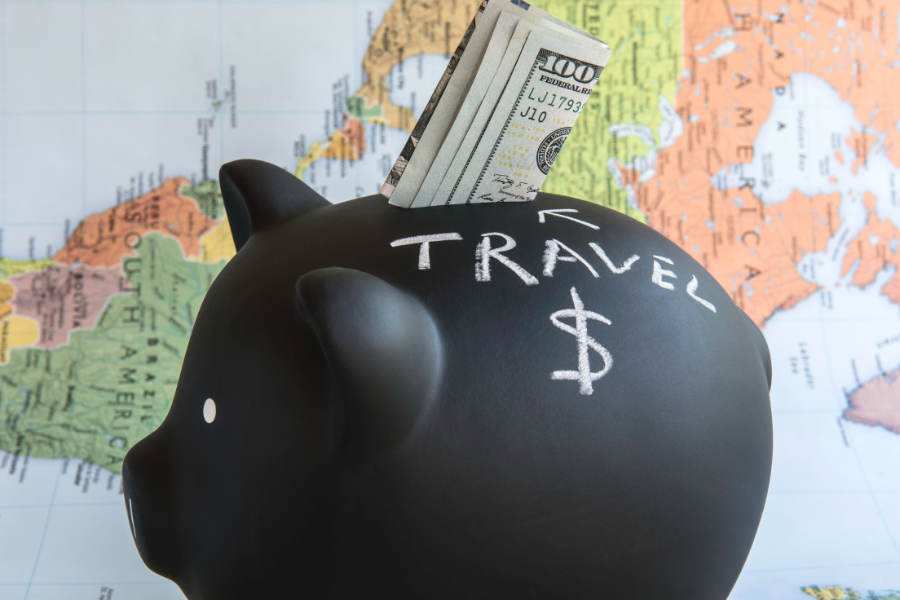This article may contain affiliate links. See our disclaimer for more information.

Welcome to our comprehensive guide on the top things to save up for in 2024. Are you looking to achieve your financial goals or fulfill long-awaited dreams? We’ve got you covered with valuable tips on how to effectively save money and set aside funds for your desired objectives.
Whether you’re aiming to build an emergency fund, save for a home purchase, invest in education, plan for retirement, indulge in travel and experiences, prioritize your health and well-being, or save up for large purchases, we have the insights you need to make the most of your savings.
Our expert advice will help you navigate the world of personal finance and provide you with the tools and strategies required to save for the things you truly value. From practical tips on budgeting and cost-saving to exploring different investment options, we’ll empower you to take control of your financial future.
So, if you’re ready to embark on a journey towards achieving your goals, keep reading for our expert recommendations on the top things to save up for in 2024!
Building an Emergency Fund

One of the most important things to save up for is an emergency fund. Having a financial safety net is crucial for unexpected expenses or emergencies that may arise. By building and growing your emergency savings, you can ensure that you are prepared for any unforeseen circumstances that come your way.
Why is an Emergency Fund Important?
An emergency fund provides a sense of security and peace of mind. It allows you to handle unexpected financial challenges without resorting to high-interest credit cards or loans. Whether it’s a medical emergency, home repairs, or unexpected job loss, having funds set aside specifically for emergencies can help you navigate these situations without incurring additional debt.
The Best Ways to Save Money for Your Emergency Fund
- Set a Savings Goal: Determine how much you want to save for your emergency fund. Aim to save at least 3 to 6 months’ worth of living expenses to cover any unexpected events.
- Create a Budget: Review your income and expenses to identify areas where you can cut back and save more money each month. Allocate a portion of your income specifically towards your emergency fund.
- Automate your Savings: Set up automatic transfers from your checking account to your emergency savings account. This ensures regular contributions without the temptation to spend the money elsewhere.
- Reduce Expenses: Look for ways to lower your monthly bills and expenses. Cut back on non-essential items and find ways to save on everyday costs such as groceries, utilities, and entertainment.
- Generate Extra Income: Explore opportunities to earn additional income through freelancing, part-time jobs, or selling unused items. Direct these extra funds towards your emergency fund.
- Minimize Debt: Paying down high-interest debt such as credit cards or personal loans can free up more money to contribute towards your emergency fund.
For more tips on automating savings, check our article here.
By following these best practices and consistently saving, you can build a substantial emergency fund that will provide financial security and peace of mind.
Saving for a Home Purchase

Saving for a home is a significant financial goal that many individuals and families aspire to achieve. Whether you’re dreaming of a cozy house in the suburbs or a stylish urban apartment, owning a home requires careful financial planning and disciplined saving habits. In this section, we will guide you through the essential steps to save money for a down payment and provide valuable tips on navigating the homebuying process.
1. Set a savings goal: Start by determining how much money you need for a down payment. Research the housing market in your desired location to get an idea of home prices and calculate the minimum down payment required by lenders. Set a realistic savings goal that aligns with your financial capabilities.
2. Create a budget: Budgeting plays a crucial role in saving for a home purchase. Analyze your income, expenses, and savings potential. Identify areas where you can cut back on non-essential spending to allocate more funds towards your down payment savings. Consider using money-saving apps or spreadsheets to track your expenses and monitor progress.
3. Automate your savings: Make saving a priority by setting up automatic transfers from your checking account to a dedicated savings account specifically for your down payment. This way, you won’t be tempted to spend the money intended for your home purchase.
4. Reduce debt and increase income: Paying off outstanding debts, such as credit card balances or student loans, can improve your credit score and increase your eligibility for favorable mortgage rates. Additionally, consider ways to boost your income, such as taking on a side hustle or negotiating a raise at work, to accelerate your savings.
5. Explore homebuyer assistance programs: Research government programs or local initiatives that provide financial assistance to first-time homebuyers. These programs can offer down payment assistance, favorable mortgage terms, or grants that can significantly reduce your upfront costs.
6. Shop around for the best mortgage: When you’re ready to buy a home, compare mortgage lenders to find the best rates and terms. Different lenders offer various options, so gather multiple quotes and consider factors like interest rates, closing costs, and loan terms. Choose the mortgage option that aligns with your financial goals and long-term plans.
7. Consider cost-saving strategies: Finally, explore cost-saving strategies to make homeownership more affordable. These can include buying a fixer-upper property, negotiating closing costs with the seller, or opting for a slightly smaller or less expensive home that still meets your needs.
Saving for a home purchase requires discipline, patience, and careful financial planning. By following these steps and implementing the necessary strategies, you’ll be well on your way to achieving your dream of homeownership.
Investing in Education

Investing in education is one of the best ways to save money in the long run. Not only does it open doors to new opportunities, but it also enhances your career prospects. Here are some practical ways to save up for your education:
- College Funds: Start saving early by setting up a college fund for yourself or your children. Research different savings accounts or investment vehicles specifically designed to help you save for higher education.
- Scholarships: Explore scholarship opportunities that can help cover tuition fees and reduce the financial burden of education. Keep an eye out for both merit-based and need-based scholarships that align with your field of study.
- Online Learning Platforms: Consider taking advantage of online learning platforms that offer affordable or free courses. This can be a cost-effective way to gain new skills and knowledge without the hefty price tag of traditional education.
By saving money and investing in your education, you’ll not only save up for a valuable asset but also gain the knowledge and skills to thrive in your chosen field. Start planning and saving today to make your educational goals a reality.
Planning for Retirement

Planning for retirement is a crucial step in securing your financial future. By starting early and making smart decisions, you can save money and ensure a comfortable retirement. Here are some of the best ways to save money and maximize your retirement savings:
- Contribute to a retirement savings account such as a 401(k) or an Individual Retirement Account (IRA). These accounts offer tax advantages and help your savings grow over time.
- Diversify your investments. Consider a mix of stocks, bonds, and other assets to balance risk and potential returns.
- Take advantage of employer matching contributions. If your employer offers a matching program, make sure to contribute enough to maximize their contributions.
- Create a budget and stick to it. By managing your expenses and saving diligently, you can save more money for retirement.
In addition to these strategies, it’s essential to stay informed about retirement planning options and keep up with any changes in laws or regulations that may affect your savings. Consulting with a financial advisor can also provide valuable guidance tailored to your specific needs and goals.
Remember, saving for retirement is a long-term commitment, and starting early gives you the advantage of time and compounding returns. By following these best practices, you can ensure a financially secure and enjoyable retirement.
Travel and Experiences

Saving up for travel and experiences can bring joy and enrichment to your life. Whether you dream of exploring exotic destinations, embarking on thrilling adventures, or simply taking a break from the daily grind, it’s important to plan your trips and activities in a way that allows you to save money and make the most of your experiences.
- Plan and budget: Start by creating a travel budget and setting aside a specific amount of money each month for your trips and experiences. By planning ahead, you’ll have a clear idea of how much you can afford to spend, making it easier to save.
- Research and compare: Look for travel deals, compare prices, and explore different options before making your bookings. Websites and apps like Expedia, Kayak, and Skyscanner can help you find affordable flights, accommodations, and activities.
- Be flexible with travel dates: Traveling during off-peak seasons or on weekdays can often save you money on flights and accommodations. Consider being flexible with your travel dates to take advantage of lower prices.
- Utilize loyalty programs and rewards: If you frequently travel or stay at hotels, join loyalty programs to earn points and enjoy exclusive discounts. Additionally, consider using credit cards that offer travel rewards to maximize your savings.
- Explore budget-friendly destinations: Not all travel experiences need to break the bank. Discover budget-friendly destinations that offer unique cultural experiences and natural wonders without sacrificing quality.
- Embrace alternative accommodations: Consider staying in vacation rentals, hostels, or alternative accommodations like Airbnb to save money on accommodations. This can also provide a more authentic and immersive experience.
- Take advantage of free activities and attractions: Many destinations offer free or low-cost activities, museums, and attractions. Research ahead of time and create an itinerary that includes a mix of paid and free experiences.
- Pack light and avoid extra fees: Pack strategically to avoid excess baggage fees when flying. Research airline baggage policies and pack efficiently, bringing only what you need for your trip.
For more on budget travel, see our article here.
By implementing these tips, you can save money while still enjoying incredible travel experiences. Remember, the key is to plan, budget, and make informed decisions that align with your financial goals. Happy travels!
Investing in Your Health and Well-being

Prioritizing your health and well-being is essential, and it doesn’t have to break the bank. Here are some of the best ways to save money while investing in your health and well-being.
- Utilize Preventive Care: Take advantage of free or low-cost preventive care services, such as annual check-ups, vaccinations, and screenings. These can help catch potential health issues early and prevent costly treatments down the line.
- Compare Healthcare Costs: Before scheduling medical procedures or appointments, research and compare costs from different providers. Websites and apps can help you find affordable options and healthcare providers that offer quality services.
- Opt for Generic Medications: Generic medications are often much cheaper than their brand-name counterparts but provide the same effectiveness. Consult with your healthcare provider and ask about generic alternatives to save money on prescription drugs.
- Practice Self-care at Home: You don’t always need expensive spa treatments or gym memberships to prioritize self-care. Create a relaxing atmosphere at home, indulge in hobbies you enjoy, or try free or low-cost meditation and exercise apps.
- Shop Smart for Fitness: Look for budget-friendly exercise equipment, such as resistance bands or second-hand weights, instead of expensive gym machines. Take advantage of free workout videos and online classes to stay active without spending a fortune.
Remember, investing in your health and well-being is a long-term commitment, and finding affordable options doesn’t mean compromising on quality. By implementing these strategies, you can save money while taking care of yourself both physically and mentally.
Saving for Large Purchases

When it comes to making significant purchases like a new car, a major home renovation, or a dream wedding, it’s essential to have a well-thought-out savings plan in place. Here are some strategies to help you save money and achieve your big-ticket item goals:
- Set clear financial goals: Start by defining your target amount and the timeline for reaching it. This will give you a clear target to work towards and help you stay focused on your savings.
- Create a dedicated savings account: Open a separate savings account specifically for your large purchase. This will not only keep your funds separate but also make it easier to track your progress.
- Automate your savings: Set up automatic transfers from your primary account to your dedicated savings account on a regular basis. This can help you save consistently without having to think about it.
- Reduce expenses: Look for opportunities to cut back on unnecessary expenses and redirect those savings towards your large purchase fund. This could include things like eating out less, canceling unused subscriptions, or finding more affordable alternatives for everyday items.
- Research and compare prices: Before making a big purchase, take the time to research different options and compare prices. Look for deals, discounts, or promotional offers that can help you save money.
- Consider financing options: If your large purchase requires financing, explore different options available to you. Compare interest rates and terms to ensure you’re getting the best deal possible. A great example of this is buying a new car. Dealership loans rarely have the best interest rate compared to getting one from your local bank.
By following these strategies, you can make progress towards saving for your large purchases while also maintaining financial stability. Remember, patience and consistency are key on your savings journey. Start saving today and watch your dreams become a reality.
Conclusion

In conclusion, saving money is not only about being frugal, but also about setting clear goals and adopting smart strategies. By incorporating the tips and techniques discussed in this article, you can take significant steps towards achieving your financial goals while also securing a better future for yourself.
Remember, saving money requires discipline, perseverance, and a willingness to make small sacrifices in the present for greater rewards in the long run. Whether it’s building an emergency fund, saving for a home, investing in education, planning for retirement, enjoying travel and experiences, prioritizing your health, or saving for large purchases, taking control of your finances is within your grasp.
Get started today! Evaluate your finances, identify areas where you can cut back on expenses, and implement practical strategies to save money. Whether it’s automating your savings, creating a budget, or exploring investment opportunities, every action you take brings you closer to financial stability and a brighter future. So go ahead, make the commitment to save and watch as your efforts compound over time.





